It looks like you're using an Ad Blocker.
Please white-list or disable AboveTopSecret.com in your ad-blocking tool.
Thank you.
Some features of ATS will be disabled while you continue to use an ad-blocker.
share:
a reply to: OneBigMonkeyToo
Here, found it for you, thanks to the magical powers of Google search: science.nasa.gov...
In NASA's defence, not all of their articles can be 100% accurate. For example, on the page about comets they propagated the false idea that comets appear green due to ionised CN (whereas in reality it's due to ionised C2).
The author of this article might have just pulled this generalisation out of his head.
As for the Hubble not being the right tool for imaging the Moon, it did have at least one useful task: www.nasa.gov...
Here, found it for you, thanks to the magical powers of Google search: science.nasa.gov...
Studying the moon can be tricky, because the moon is too bright to be photographed with large, highly sensitive telescopes on the ground or with the Hubble Space Telescope. The moon's brightness can potentially damage such sensitive optical instruments.
In NASA's defence, not all of their articles can be 100% accurate. For example, on the page about comets they propagated the false idea that comets appear green due to ionised CN (whereas in reality it's due to ionised C2).
The author of this article might have just pulled this generalisation out of his head.
As for the Hubble not being the right tool for imaging the Moon, it did have at least one useful task: www.nasa.gov...
edit on 23-5-2016 by wildespace because: (no reason given)
a reply to: wildespace
Thanks I also found this:
www.slate.com...
Which raises a point I hadn't thought of - not that the moon is too bright but that it moves so fast it is hard to image for Hubble. As someone who has watched the moon sail by in his telescope I should have realised this.
Platt's point is clear: yes, some Hubble instruments are too sensitive for the moon, others are most definitely not and were used in 1999.
I think a lot of the confusion stems from deliberately misinterpretations of fact in reporting by the likes of Hoagland, who gives no sources whatsoever for the claims made in his book about Hubble's alleged inability to image the moon. That and a willingness to believe that NASA has to be hiding something because people can't see what they desperately want to be there in NASA images, instead of the more obvious truth (proven by other space agencies) that the stuff just isn't there.
End of thread divert from me: Hubble has taken cool pictures of Mars - again
Thanks I also found this:
www.slate.com...
Which raises a point I hadn't thought of - not that the moon is too bright but that it moves so fast it is hard to image for Hubble. As someone who has watched the moon sail by in his telescope I should have realised this.
Platt's point is clear: yes, some Hubble instruments are too sensitive for the moon, others are most definitely not and were used in 1999.
I think a lot of the confusion stems from deliberately misinterpretations of fact in reporting by the likes of Hoagland, who gives no sources whatsoever for the claims made in his book about Hubble's alleged inability to image the moon. That and a willingness to believe that NASA has to be hiding something because people can't see what they desperately want to be there in NASA images, instead of the more obvious truth (proven by other space agencies) that the stuff just isn't there.
End of thread divert from me: Hubble has taken cool pictures of Mars - again
originally posted by: Phage
a reply to: gortex
Au Contrair. Just give us a couple of centuries.
you do bring a smile to my face Phage ..
Earth is still in the Civilization Type 0 Stage
Getting Near to Type 1
To those that dont know
Star Trek is Type 2
Star wars is Type 3 ( Depending Who in that Galaxy )
and We are Type 0
Well Star Trek had some Pretty cool Predictions that came Reality
but for the Genesis Project
Wont be my life time nor my Great grand children Life time either ..
for that to Happen we might as well harness the so call God particle.
let alone Anti matter
Mars Core Needs to be reactivated ! Impossible with the tech we Have
Earthen's need to learn and study more about the loss of its magnetic field first ::
Revealed: How Mars Lost Its Atmosphere
science.time.com...
Was Mars’ Magnetic Field Blasted Away?
6 May , 2009 by Nancy Atkinson
www.universetoday.com...
although Methane Spikes has increased
Mysterious Mars Methane Spike Not a Seasonal Event
www.space.com...
and Temperature can get to 70 degrees F* during the equator during the summer months of Mars
assuming not consistent..
originally posted by: NoCorruptionAllowed
originally posted by: OneBigMonkeyToo
a reply to: Aliensun
No-one has said you can't, it's just you can't get high resolution close ups with it. Using Hubble to get high resolution images of nearby objects is like trying to watch your living room TV through binoculars.
Here's a Hubble close up that can see the foot prints on the moon from Apollo..
www.dailygalaxy.com...
Oops, this is LROC.. Still a cute little pic
A stride like that supposed he'd be going quite a clip, not like they shot at the moon landing vids. And funny, if CS people said that was a footprint? We'd all be laughed at and told it's a geological feature.
originally posted by: pikestaff
So Mars has clouds, I just did not know that the Mars atmosphere, which I thought was one hundredths of earth's, could support clouds, seeing as clouds are water vapour, where did that come from?
Am I right in thinking Mars has more atmosphere and water than I was led to believe?
Is some sort of scam going on?
5% of Earth's surface pressure is what I had heard. Supposedly somehow Pluto has a thicker atmosphere then Mars they found out on their recent flyby. I dunno if they're lying per se, but there is definitely more in the universe then our scientific Horatio's have yet to imagine there could be me thinks.
originally posted by: LordDraconia
originally posted by: NoCorruptionAllowed
originally posted by: OneBigMonkeyToo
a reply to: Aliensun
No-one has said you can't, it's just you can't get high resolution close ups with it. Using Hubble to get high resolution images of nearby objects is like trying to watch your living room TV through binoculars.
Here's a Hubble close up that can see the foot prints on the moon from Apollo..
www.dailygalaxy.com...
Oops, this is LROC.. Still a cute little pic
A stride like that supposed he'd be going quite a clip, not like they shot at the moon landing vids. And funny, if CS people said that was a footprint? We'd all be laughed at and told it's a geological feature.
Mhhhyeeah, clearly a geological feature:
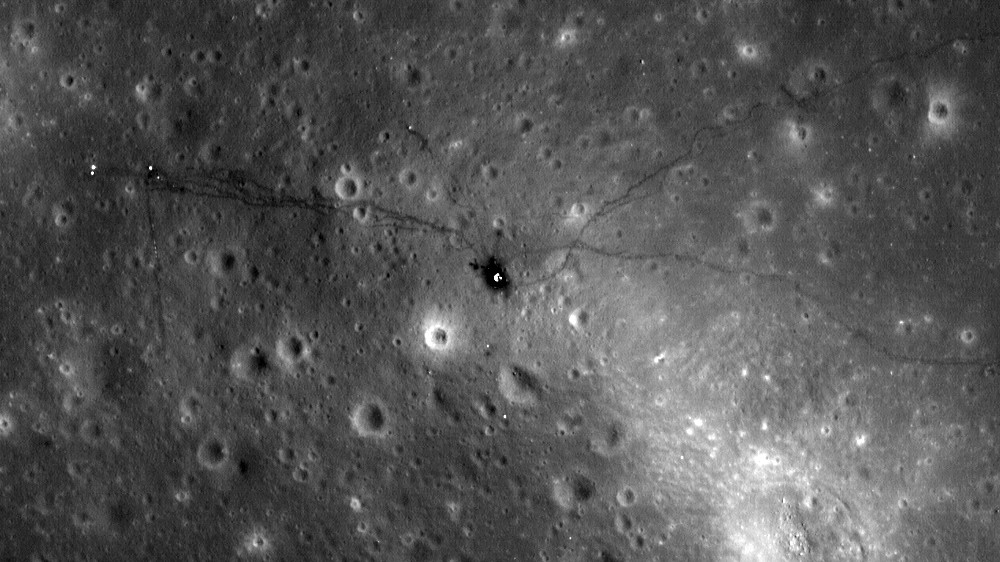
/sarcasm
In fact, if the Apollo program had never happened, and someone showed me this photo of the Moon, I'd immediately conclude someone's been there (either humans, secretly, or even aliens). The photo clearly shows signs of non-natural activity.
~~~
By the way, there are lots of film footage shot on the Moon by the Apollo guys.
originally posted by: wildespace
originally posted by: LordDraconia
originally posted by: NoCorruptionAllowed
originally posted by: OneBigMonkeyToo
a reply to: Aliensun
No-one has said you can't, it's just you can't get high resolution close ups with it. Using Hubble to get high resolution images of nearby objects is like trying to watch your living room TV through binoculars.
Here's a Hubble close up that can see the foot prints on the moon from Apollo..
www.dailygalaxy.com...
Oops, this is LROC.. Still a cute little pic
A stride like that supposed he'd be going quite a clip, not like they shot at the moon landing vids. And funny, if CS people said that was a footprint? We'd all be laughed at and told it's a geological feature.
Mhhhyeeah, clearly a geological feature:
/sarcasm
In fact, if the Apollo program had never happened, and someone showed me this photo of the Moon, I'd immediately conclude someone's been there (either humans, secretly, or even aliens). The photo clearly shows signs of non-natural activity.
~~~
By the way, there are lots of film footage shot on the Moon by the Apollo guys.
Oh shut the front door. Here have some more. I guess yours is real and mine is fake: secretsofspace.com... i.ytimg.com... cdn.inquisitr.com... According to some CTs: Either there are fossils on Mars exactly the same as on Earth, or they are filming this on Earth.
Ya there is a lot of footage with shadows cast different ways that couldn't be possible because supposedly they didn't bring a light and pictures took from within shadows that should have come out dark. Not to mention that every picture they took somehow came out a masterpiece, never mind the fact that they couldn't work the viewfinder from the supposed camera on their chest. Maybe they had a stage set up on the moon? I don't know. I do know that their official story is confirmably BS though.
originally posted by: LordDraconia
I do know that their official story is confirmably BS though.
Then provide evidence confirming it. Put up or shut up.
edit on 5/24/2016 by AdmireTheDistance because: (no reason given)
originally posted by: wildespace
For the record, the Very Large Telescope in Chile has 4 times the resolution of the Hubble Telescope (8 meters versus 2). Granted, it's not positioned in space to avoid atmospheric disturbances, but it manages to counter them using a sophisticated system of adaptive optics and interferometry.
VLT could probably produce a better image of Mars than the Hubble.
~~~
P.S. You can now officially call me the resident party-pooper!
Well I will POOP on yours the VLT has the SAME resolution as the Hubble.
Hubble's angular resolution is 0.05 arcsecond.
The telesopes there have to be combined to beat the Hubble resolution.
Each individual telescope can detect objects roughly four billion times fainter than can be detected with the naked eye, and when all the telescopes are combined, the facility can achieve an angular resolution of about 0.001 arc-second (This is equivalent to roughly 2 meters resolution at the distance of the Moon). In single telescope mode of operation angular resolution is about 0.05 arc-second.
originally posted by: LordDraconia
Oh shut the front door. Here have some more. I guess yours is real and mine is fake: secretsofspace.com... i.ytimg.com... cdn.inquisitr.com... According to some CTs: Either there are fossils on Mars exactly the same as on Earth, or they are filming this on Earth.
Ya there is a lot of footage with shadows cast different ways that couldn't be possible because supposedly they didn't bring a light and pictures took from within shadows that should have come out dark. Not to mention that every picture they took somehow came out a masterpiece, never mind the fact that they couldn't work the viewfinder from the supposed camera on their chest. Maybe they had a stage set up on the moon? I don't know. I do know that their official story is confirmably BS though.
The problem is people like YOU that don't have a clue repeat parrot fashion the BS you read elsewhere.
All of the pictures where NOT perfect if YOU took the time to look you would know that.
Look here Apollo Archive a see how many are NOT perfect like you claim.
As for objects/pictures in shadow have you ever seen a photographer using a reflector to reflect light onto a dark subject. The LUNAR surface is the reflector.
It's all about exposure I can make this white sheet of paper
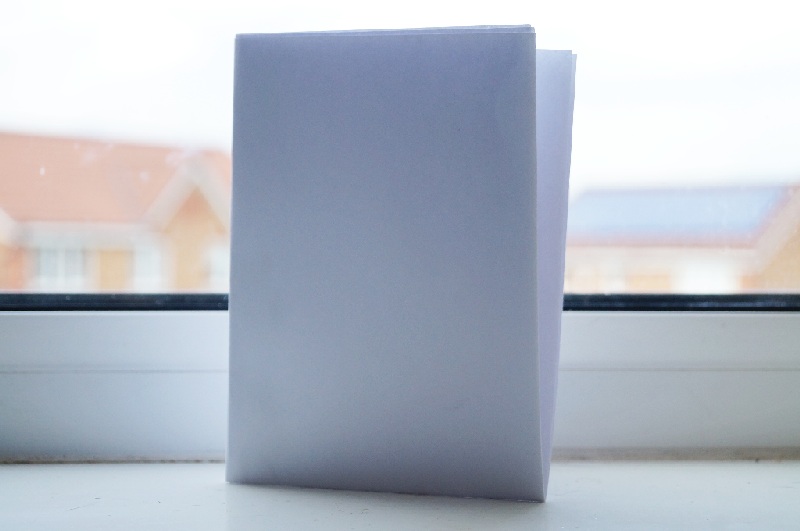
Look black by changing the exposure
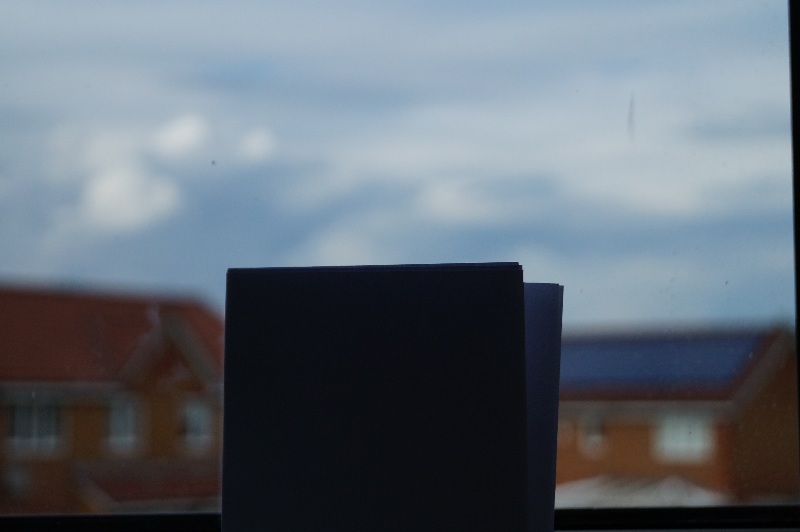
As for shadows going different direction shadows FOLLOW the terrain they land on and with wide angle lens shadows can appear to point in different directions.
Go outside and open your eyes !
a reply to: MysterX
The resolution of the Hubble at the distance of the Moon is around 300ft. The resolution of the LRO was as good as 0.25m/pixel in it's lowest orbits with an average of 0.5mtr/pixel on other orbits.
As for the claims re the Moon and NASA.
NASA was asked if the Hubble could image the Apollo landing sites, this was then claimed as saying they couldn't image the Moon you see X when you rely on conspiracy sites for ALL your info it's a problem.
Look HERE
When open click a link in the Hubble site for a Moon image.
The resolution of the Hubble at the distance of the Moon is around 300ft. The resolution of the LRO was as good as 0.25m/pixel in it's lowest orbits with an average of 0.5mtr/pixel on other orbits.
As for the claims re the Moon and NASA.
NASA was asked if the Hubble could image the Apollo landing sites, this was then claimed as saying they couldn't image the Moon you see X when you rely on conspiracy sites for ALL your info it's a problem.
Look HERE
When open click a link in the Hubble site for a Moon image.
originally posted by: LordDraconia
Oh shut the front door. Here have some more. I guess yours is real and mine is fake: secretsofspace.com... i.ytimg.com... cdn.inquisitr.com... According to some CTs: Either there are fossils on Mars exactly the same as on Earth, or they are filming this on Earth.
Ah, so you do accept that the Moon photos show something unnatural, like tracks and artificial objects? Good. I'm not goona go into Mars "anomalies" because you're shifting the goalposts.
Ya there is a lot of footage with shadows cast different ways that couldn't be possible because supposedly they didn't bring a light and pictures took from within shadows that should have come out dark.
You don't know anything about photography and perspective, then.
Not to mention that every picture they took somehow came out a masterpiece, never mind the fact that they couldn't work the viewfinder from the supposed camera on their chest.
Have you actually looked at the archives of Apollo images on the Moon? If you had, you'd see many badly-composed or badly-exposed images, some even taken accidentally.
Is this a well-composed shot?
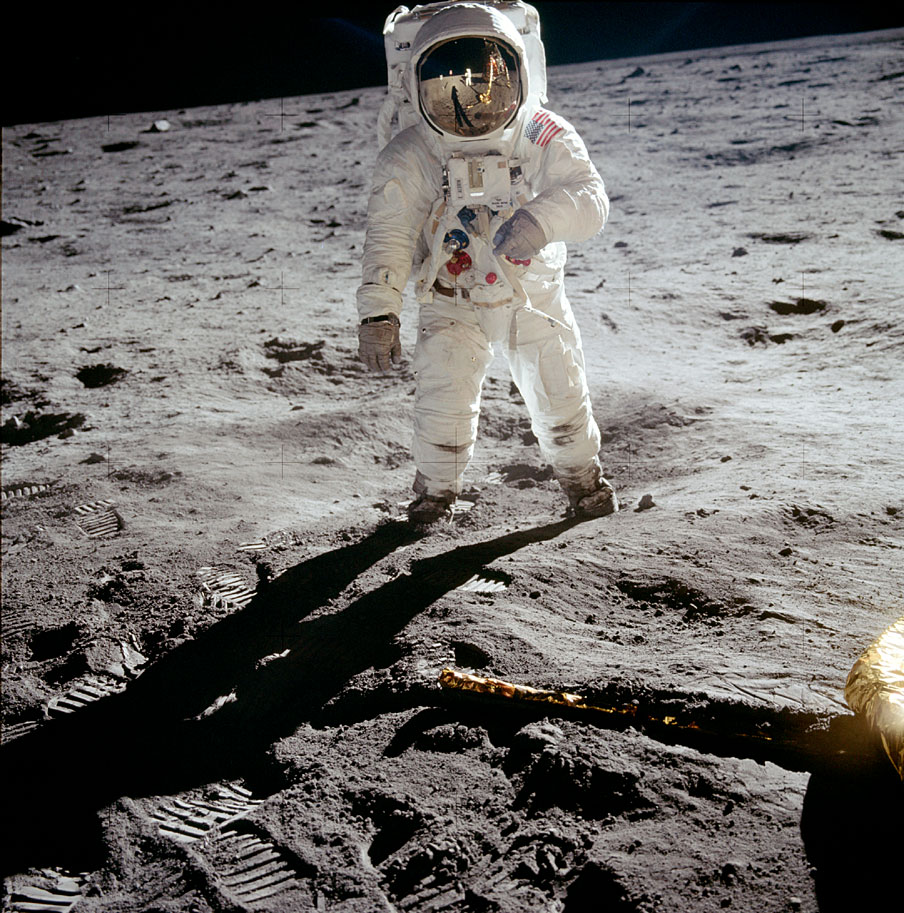
What about this one?
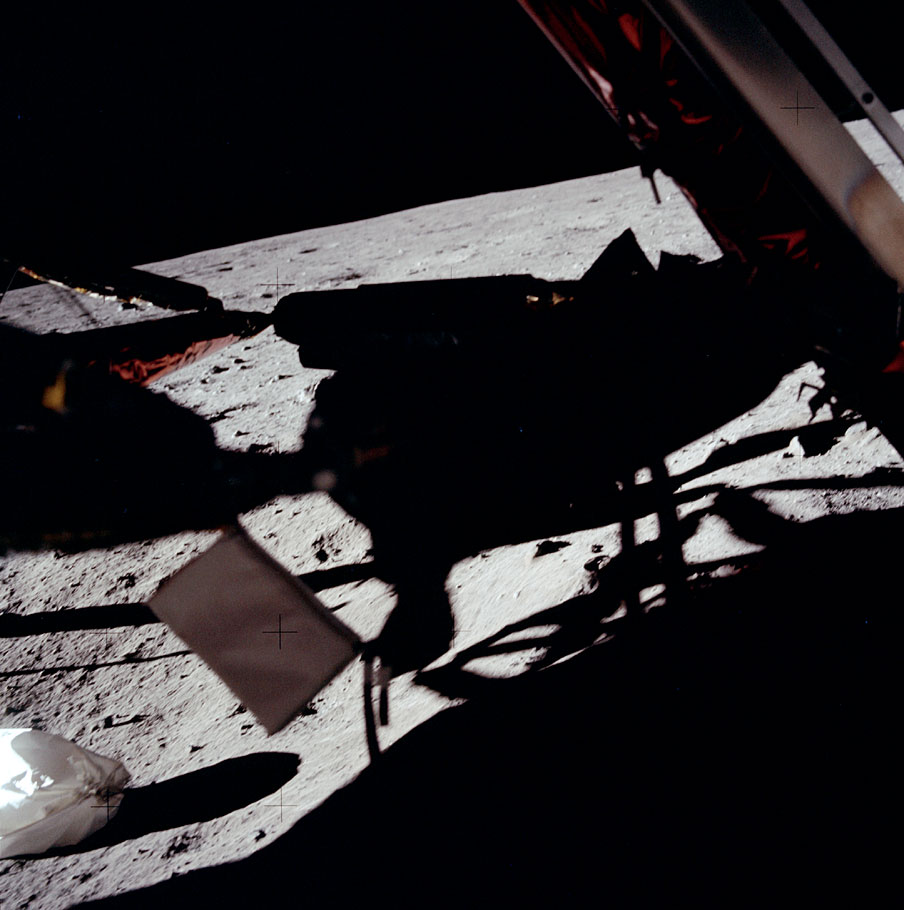
Or this one?
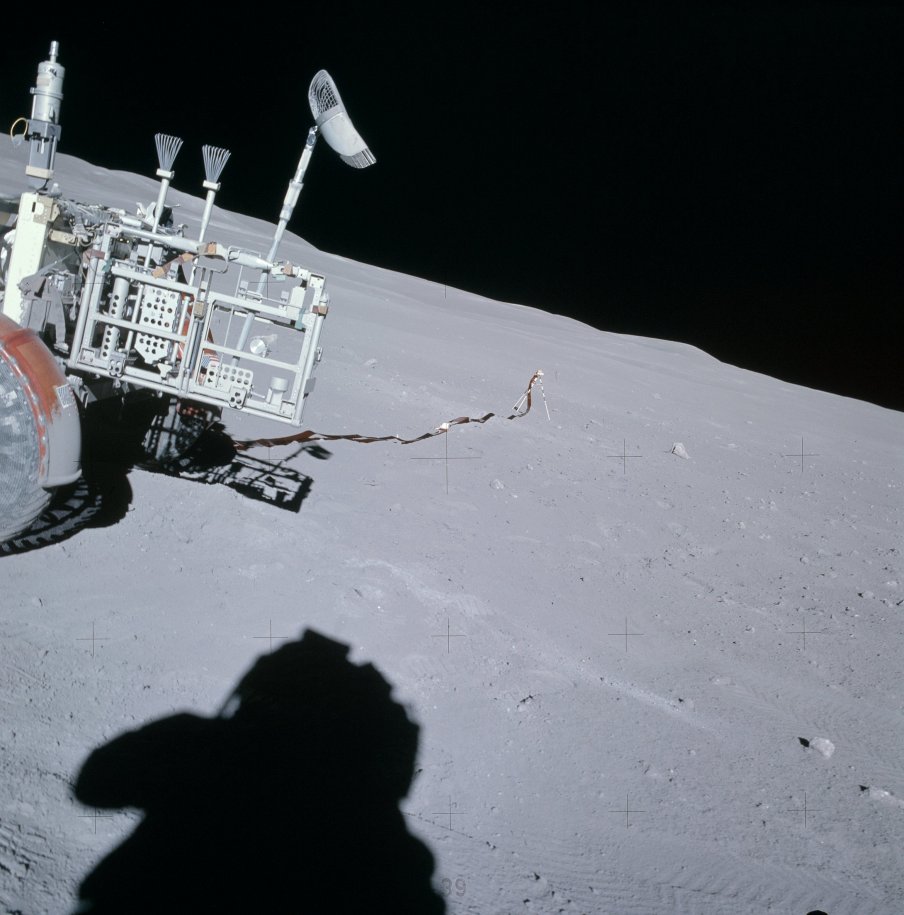
I love seeing people's arguments crumbling into dust the moment they state them.
originally posted by: wmd_2008
Hmm, so how does a single VLT telescope, with the mirror diameter of 8.2, has the same angular resolution as the Hubble with its 2.4 meter mirror? Is the atmospheric turbulence such a limiting factor?
edit on 25-5-2016 by wildespace because: (no reason given)
a reply to: wildespace
Must be I have seen a new quote claiming 0.03 arc seconds for Hubble. Combined they claim a figure way better than the Hubble.
Must be I have seen a new quote claiming 0.03 arc seconds for Hubble. Combined they claim a figure way better than the Hubble.
The Hubble SPACE telescope is amazing because it's in space and doesn't have to look through our atmosphere. However, there are already better
land-based telescopes today vs Hubble.
I eagerly await Hubble 2.
I eagerly await Hubble 2.
originally posted by: AdmireTheDistance
originally posted by: LordDraconia
I do know that their official story is confirmably BS though.
Then provide evidence confirming it. Put up or shut up.
I found this british CT documentary particularly enlightening about the many inconsistencies of the Mars rover clips and vids: It's a long movie and I've only seen about a 30 min clip of it but this part about 58 mins in goes to show that NASA is willing to use obviously fake footage on the moon since i can't talk about NASA faking other stuff because that is moving your goalposts: youtu.be...
edit on 31-5-2016
by LordDraconia because: (no reason given)
I love seeing people's arguments crumbling into dust the moment they state them.
They still can't even put men in the new Orion Capsule out past the Van Allen belts. Here is the NASA engineer saying that www.youtube.com...
Why have we never gone back in 44 years?
You can actually see their wires in some of the moonwalk vids: youtu.be... Do some basic research it won't take long I'll wait. How come NASA "lost" the footage of the original moon landings? How come there are dozens if not hundreds of inconsistencies with their story?
edit on 31-5-2016 by LordDraconia because: (no reason given)
a reply to: LordDraconia
First we went to the Moon 6 times not just once. As for the NASA engineer did YOU actually listen to him or just read the conspiracy text on the screen. Apollo had very little computer power on board, Orion will much more, he said they are testing the effects of the radiation on the SYSTEMS as not only will it have to go out and back through the VA Belts they will spend a LONGER TIME on missions.
As for your other video what they claim is a reflection of a wire is a flare on the LENS look how over exposed the image was (from the guy who claimed all NASA images were perfect )
Here this should keep you busy a closed thread on here.
670+ pages of Apollo hoax claims debunked
I mean when Apollo hoax claimers can't even understand how shadows work
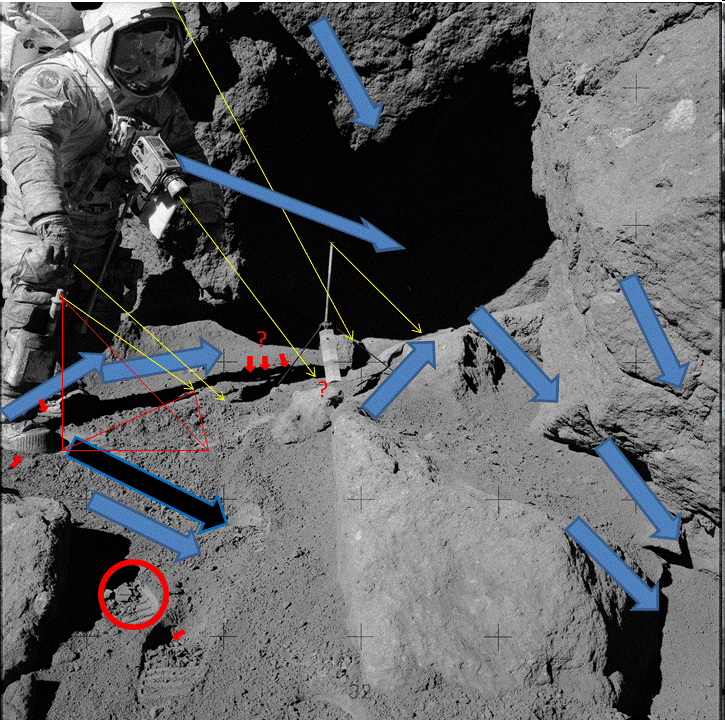
From the thread above the arrows are supposed to show the direction of the light source, the poster didn't understand that SHADOWS FOLLOW the terrain they land on.
First we went to the Moon 6 times not just once. As for the NASA engineer did YOU actually listen to him or just read the conspiracy text on the screen. Apollo had very little computer power on board, Orion will much more, he said they are testing the effects of the radiation on the SYSTEMS as not only will it have to go out and back through the VA Belts they will spend a LONGER TIME on missions.
In fact, Dr. Van Allen helped to design the Apollo lunar trajectories, which were engineered specifically to lessen radiation exposure.
As for your other video what they claim is a reflection of a wire is a flare on the LENS look how over exposed the image was (from the guy who claimed all NASA images were perfect )
Here this should keep you busy a closed thread on here.
670+ pages of Apollo hoax claims debunked
I mean when Apollo hoax claimers can't even understand how shadows work

From the thread above the arrows are supposed to show the direction of the light source, the poster didn't understand that SHADOWS FOLLOW the terrain they land on.
new topics
-
Watts home paranormal activity
Paranormal Studies: 5 hours ago -
So, what is really going on in South Korea ?
World War Three: 5 hours ago -
Congress Says the FBI is Covering Up Vital Info on the Jan 5th 2021 D.C. Pipe Bombs at RNC-DNC.
Political Conspiracies: 6 hours ago -
The trial on kids was stopped
Medical Issues & Conspiracies: 9 hours ago -
Orbs Appear And Form Triangle On Live Cam.
Aliens and UFOs: 10 hours ago
top topics
-
Biden to award Presidential Citizens Medal to Liz Cheney and Bennie Thompson
US Political Madness: 13 hours ago, 11 flags -
Biden Has New Bizarre Injuries to His Face
Politicians & People: 12 hours ago, 11 flags -
The trial on kids was stopped
Medical Issues & Conspiracies: 9 hours ago, 9 flags -
Congress Says the FBI is Covering Up Vital Info on the Jan 5th 2021 D.C. Pipe Bombs at RNC-DNC.
Political Conspiracies: 6 hours ago, 9 flags -
Orbs Appear And Form Triangle On Live Cam.
Aliens and UFOs: 10 hours ago, 6 flags -
Elon Musk Calls for Tommy Robinson to be Freed - and Takes a Dig at Starmer
Politicians & People: 13 hours ago, 5 flags -
Something is not adding up in regards to the H-1B commotion
General Conspiracies: 12 hours ago, 5 flags -
So, what is really going on in South Korea ?
World War Three: 5 hours ago, 5 flags -
Watts home paranormal activity
Paranormal Studies: 5 hours ago, 3 flags
active topics
-
Tesla Cybertruck Explodes in Front of Trump Hotel in Las Vegas
Mainstream News • 154 • : Guyfriday -
Ukraine halts transit of Russian gas to Europe after a prewar deal expired
Political Conspiracies • 115 • : Flyingclaydisk -
Biden Has New Bizarre Injuries to His Face
Politicians & People • 11 • : berbofthegreen -
Congress Says the FBI is Covering Up Vital Info on the Jan 5th 2021 D.C. Pipe Bombs at RNC-DNC.
Political Conspiracies • 21 • : charlest2 -
The trial on kids was stopped
Medical Issues & Conspiracies • 11 • : annonentity -
-@TH3WH17ERABB17- -Q- ---TIME TO SHOW THE WORLD--- -Part- --44--
Dissecting Disinformation • 3906 • : duncanagain -
Biden to award Presidential Citizens Medal to Liz Cheney and Bennie Thompson
US Political Madness • 14 • : WeMustCare -
So, what is really going on in South Korea ?
World War Three • 6 • : CriticalStinker -
The C.D.C. Says There Was NO INFLUENZA Worth Reporting for the 2020-2021 Flu Season.
Diseases and Pandemics • 98 • : WeMustCare -
Strange fog all over the northern hemisphere
General Conspiracies • 45 • : TheMisguidedAngel
